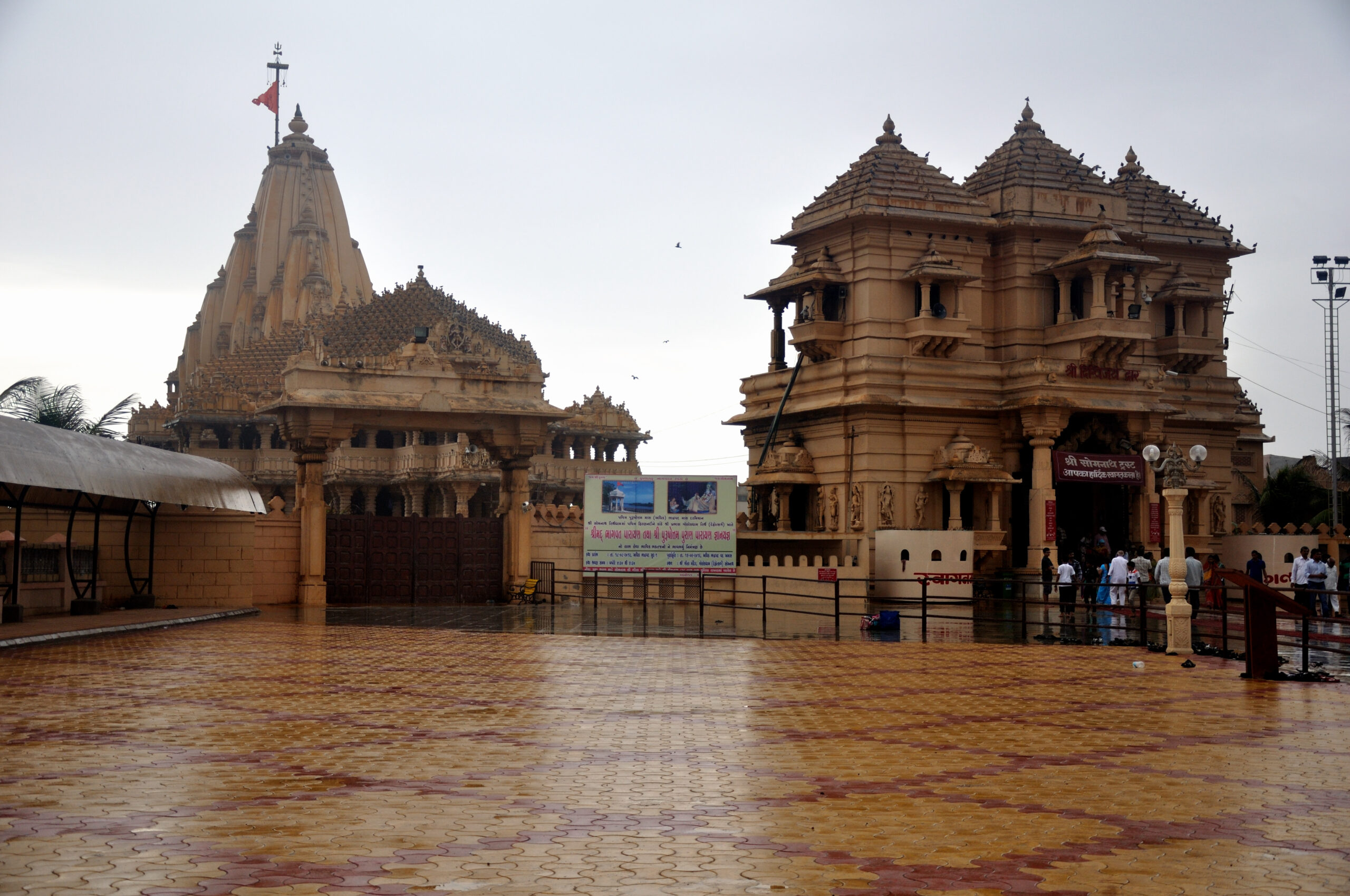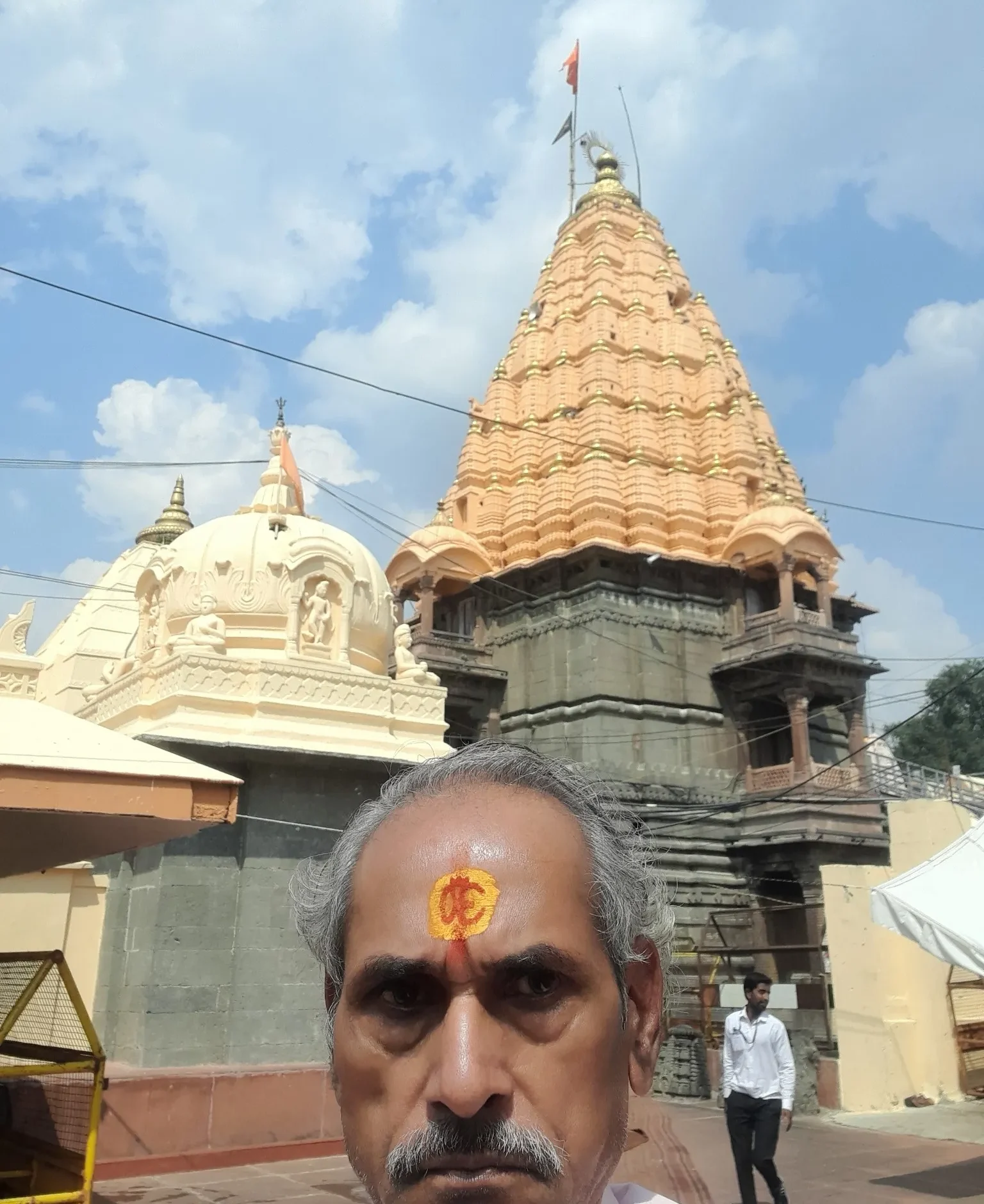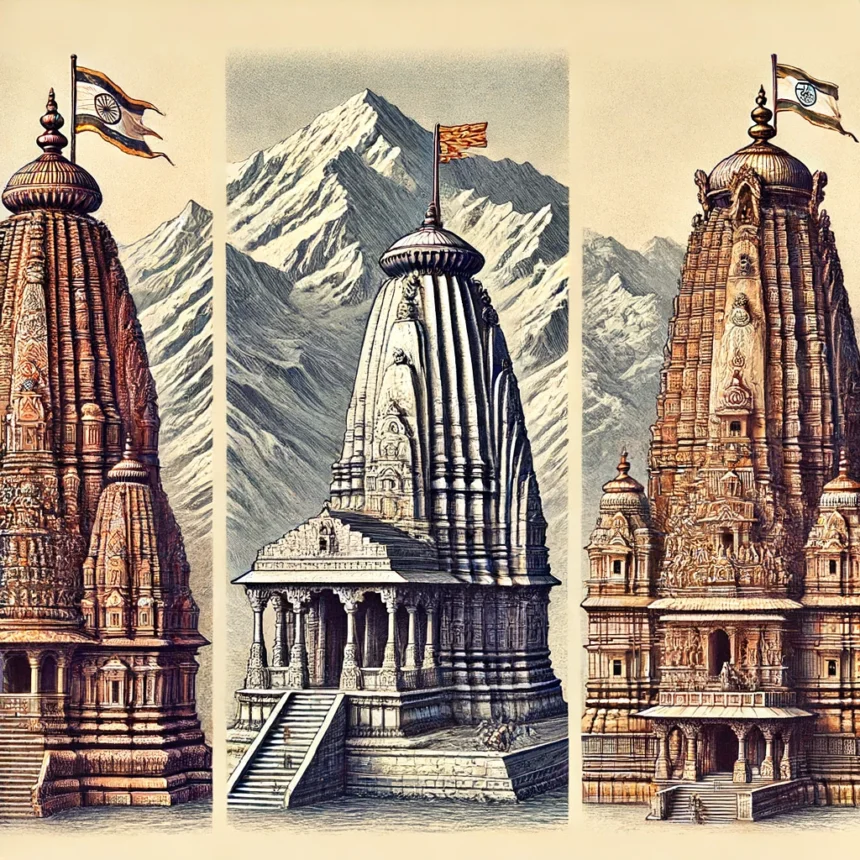The Undiminishable Light of 12 Jyotirlingas
The Shaswat Light From The 12 Jyotirlingas
The 12 Jyotirlingas stand as pillars of spiritual enlightenment within Hinduism, each enshrining a radiant Lingam of Lord Shiva that symbolizes an undying light. These sites transcend mere sacredness, representing a deep, spiritual passage across the diverse landscapes of India, embodying the core of devotion to Lord Shiva. Each Jyotirlinga vibrates with a unique spiritual energy, reflecting different attributes of the divine. Distributed throughout India’s rich tapestry, these Jyotirlingas draw countless devotees every year, each in pursuit of divine blessings and spiritual awakening.
This blog post is featured on HinduInfoPedia.org as part of our weekly thematic schedule, specifically under “Friday – Spirituality and Worship: Temple Worship.” It provides a detailed exploration of the 12 Jyotirlingas across India, rich with spiritual insights and practical guidance for devotees. Published on June 14, 2024, this entry aims to enrich the spiritual journey of our readers, offering a profound look into the sanctity and architectural grandeur of these revered temples.
Somnath Jyotirlinga, Gujarat

Architecture: The present temple features Chalukyan style architecture with intricate carvings, a soaring shikhara (spire), and a gold-plated sanctum sanctorum. The temple’s orientation towards the sea is said to be significant, symbolizing the eternal nature of Lord Shiva.
Ceremonies: The ‘Aarti’ at sunrise and sunset, attended by thousands, is especially poignant, as the sound of conches and bells blends with the roar of the ocean.
Pilgrim’s Testimonial: “Visiting Somnath brought an inexplicable peace to my heart. The mix of history, spirituality, and the ocean’s waves creates a transcendent experience,” shared by Priya, a pilgrim from Mumbai.
Travel Tips: The best time to visit Somnath, a crucial part of the 12 Jyotirlingas, is from October to March when the weather is cooler and conducive for exploration. During Mahashivratri, the temple sees a dramatic increase in devotees.
Kedarnath Jyotirlinga, Uttarakhand
Legend: Kedarnath is associated with the legend of the Pandavas seeking penance from Lord Shiva after the battle of Kurukshetra. Shiva, disguised as a bull, dived into the ground here to evade them, leaving his hump visible.
Architecture: Situated amidst the majestic Himalayas, Kedarnath Temple showcases a rustic stone façade with a large, imposing structure that has stood the test of time and harsh climates. The architecture reflects the ancient Katarmal style, notable for its simplicity and resilience.
Ceremonies: The ‘Pooja’ rituals performed here are rich with Vedic chants and traditional offerings to Shiva. During the winter months, when the temple is closed, the deity is worshiped at Ukhimath.
Pilgrim’s Testimonial: “The journey to Kedarnath is as mesmerizing as the destination itself. The rugged path that leads to the divine feels like a route to spiritual cleansing,” recounted by Arjun, a trekker from Delhi.
Travel Tips: Trekking to Kedarnath is best undertaken between May and June or after the monsoon from September to October. Pilgrims should prepare for cold weather and ensure physical readiness for the trek.
Mahakaleshwar Jyotirlinga, Madhya Pradesh

Legend: Mahakaleshwar in Ujjain is known for the idol of Lord Shiva that faces south, a unique feature signifying the deity’s all-encompassing nature. The temple stands on the site where Shiva vanquished the demon Dushana.
Architecture: This temple is a splendid example of Maratha architecture, with an imposing spire and an intricate marble inlay work inside the sanctum that captivates all who visit.
Ceremonies: The ‘Bhasma Aarti’ performed at dawn, involving the ritualistic application of sacred ash, is a spectacle of devotion and a must-see for visitors.
Pilgrim’s Testimonial: “Attending the Bhasma Aarti at Mahakaleshwar, one of the powerful 12 Jyotirlingas, was a surreal experience. It’s not just a ritual; it’s a powerful spiritual invocation that stays with you,” mentioned by Nitesh, a spiritual blogger from Pune.
Travel Tips: Visit during cooler months, from October to March. Ujjain is also famous for the Kumbh Mela, held every 12 years, when the spiritual energy of the city is at its peak.
Mallikarjuna Jyotirlinga, Andhra Pradesh
Legend: Dedicated to Lord Mallikarjuna (Shiva) and Goddess Bhramaramba (Parvati), Mallikarjuna Jyotirlinga symbolizes the divine union and eternal companionship. It’s said to be where Lord Shiva and Parvati visited their elder son Kartikeya after his decision to move to the mountain.
Architecture: Attending the Bhasma Aarti at Mahakaleshwar, one of the powerful 12 Jyotirlingas, was a surreal experience. It’s not just a ritual; it’s a powerful spiritual invocation that stays with you,” mentioned by Nitesh, a spiritual blogger from Pune.
Ceremonies: Regular poojas and celebrations mark the temple’s religious calendar, with a special emphasis on Mahashivaratri, attracting thousands of devotees for overnight vigils and elaborate offerings.
Pilgrim’s Testimonial: “The tranquility of Mallikarjuna amidst the dense forests uplifts the soul. The intricate carvings and serene environment offer a perfect place for meditation,” says Geetha, a frequent visitor.
Travel Tips: Best visited during the winter months from November to February when the weather is pleasant. Devotees should consider attending during Mahashivaratri for a truly vibrant experience.
Omkareshwar Jyotirlinga, Madhya Pradesh
Legend: Omkareshwar Jyotirlinga, situated on the picturesque Mandhata Island, derives its name from the sacred Hindu symbol ‘Om,’ which the island resembles. The island is a site of deep mythological significance, where Lord Shiva is said to have appeared in the form of an Omkareshwar linga to defeat the demons besieging the gods.
Architecture: This temple stands out with its intricate rock-cut architecture, seamlessly blending into the island’s natural topography. The sanctum is designed to echo the sound of chants mystically, enhancing the spiritual ambiance.
Ceremonies: The temple is known for its vibrant celebrations during major festivals like Shivratri when the chants of Rudra Suktha are sung in unison by the gathered devotees.
Pilgrim’s Testimonial: “Omkareshwar’s serene environment by the river coupled with the resonant chants creates a mesmerizing spiritual experience,” notes Anil, a pilgrim from Mumbai.
Travel Tips: Ideal to visit during the cooler months from November to February. The boat ride to the island is a scenic introduction to the temple’s divine presence.
Kashi Vishwanath Jyotirlinga, Uttar Pradesh
Legend: Situated in the ancient and spiritual city of Varanasi, Kashi Vishwanath Temple is revered as a place where a mere glimpse of the Jyotirlinga is believed to liberate the soul from the cycle of birth and death. The temple is linked to the legend where Lord Shiva manifests himself as an endless pillar of light.
Architecture: The temple’s current structure features intricate carvings and a series of smaller shrines within the complex, built using gold-plated spires, symbolizing the wealth of spiritual knowledge that Lord Shiva offers to his devotees.
Ceremonies: The daily rituals at Kashi Vishwanath are grand, with the Ganga Aarti in the evening being a particularly captivating spectacle, drawing devotees from all over the world.
Pilgrim’s Testimonial: “Every visit to Kashi Vishwanath leaves me feeling more enlightened and at peace. The energy during the evening Aarti by the Ganges is truly transformative,” shared by Sunita, a teacher from Lucknow.
Travel Tips: When visiting Kashi Vishwanath, one of the divine 12 Jyotirlingas, the best times are during the cooler months, from October to March. Special pujas during Shivratri and Dev Deepawali are not to be missed.
Trimbakeshwar Jyotirlinga, Maharashtra
Legend: Trimbakeshwar near Nashik is famed for its unique three-faced lingam representing Lord Brahma, Lord Vishnu, and Lord Shiva. This place is considered the origin point of the sacred Godavari River, enhancing its sanctity.
Architecture: The temple architecture is a classic example of the Indo-Aryan style, characterized by intricate stone carvings and ancient hall constructions, which are thought to resonate with celestial alignments.
Ceremonies: The temple is known for its elaborate Mahashivaratri celebrations and the special ‘Kumbh Mela’ held every twelve years, attracting millions of devotees.
Pilgrim’s Testimonial: “Visiting Trimbakeshwar during the Kumbh Mela was an eye-opening experience; the devotion and the rituals performed were deeply moving,” mentioned by Mohan, a historian from Pune.
Travel Tips: Visiting during the Monsoon or just after is spectacular, as the landscape is lush and vibrant. Be sure to check the temple schedules as timings can vary based on astronomical events.
Bhimashankar Jyotirlinga, Maharashtra
Legend: Bhimashankar is renowned for the myth where Lord Shiva is said to have taken the form of Bhimashankar to defeat the demon Bhima, protecting the gods and the devout in the process.
Architecture: The temple, set amidst the lush greenery of the Western Ghats, showcases the Nagara style of architecture with beautifully carved wooden doors and a bell designed by the Nana Phadnavis.
Ceremonies: The temple is particularly known for its vibrant Diwali celebrations when the entire temple complex is lit up with traditional lamps and echoes with the chants of prayers.
Pilgrim’s Testimonial: “The journey to Bhimashankar, a mystical member of the 12 Jyotirlingas, is as spiritual as the temple’s legendary past. The natural beauty and ancient carvings create a profound spiritual atmosphere,” recounted by Deepak, an avid trekker from Mumbai.
Travel Tips: Best visited during the winter months from November to February when the trekking routes are most accessible. The temple is also a starting point for several treks, offering a combination of spirituality and adventure.
Vaidyanath Jyotirlinga, Jharkhand
Legend: Vaidyanath, also known as Vaijnath, is where it is believed that Lord Shiva cured the demon king Ravana of his ailments, granting him boons for his penance. It stands as a symbol of healing and divine benevolence.
Architecture: The temple features an ancient architectural style with a spartan sanctum that houses the sacred lingam, believed to have immense healing powers.
Ceremonies: The temple is famous for its Shravan month celebrations, where millions of devotees offer holy water from the Ganges to the Jyotirlinga, seeking blessings for health and well-being.
Pilgrim’s Testimonial: “Visiting Vaidyanath during the Shravan month was a deeply enriching experience. The aura of devotion and the rhythmic chants uplift the spirits of all who come here,” says Priyanka, a medical student from Patna.
Travel Tips: The best time to visit is during the Shravan month (July-August) when the temple festivities are at their peak. Visitors should be prepared for large crowds during this time.
Nageshwar Jyotirlinga, Gujarat
Legend: Nageshwar Jyotirlinga is associated with the story of a demon named Daruka who captured a devotee of Shiva. It is said that Lord Shiva appeared to protect his devotee, vanquishing the demon and thereby symbolizing the protection of all devotees.
Architecture: The temple stands with a simple yet striking architecture, characterized by a robust, central shikhara (tower) rising above the sanctum. The temple’s location near the Arabian Sea adds to its mystical aura.
Ceremonies: Nageshwar is known for its elaborate Shivratri celebrations, where special rituals and vibrant festivities fill the temple with divine energy.
Pilgrim’s Testimonial: “Visiting Nageshwar changed my perspective on spirituality. The peaceful atmosphere and the ocean’s proximity make it a perfect place for contemplation,” shared by Kartik, a spiritual blogger from Ahmedabad.
Travel Tips: The best time to visit is from October to March when the weather is pleasant. Early morning visits are recommended for a serene experience before the crowds arrive.
Rameshwar Jyotirlinga, Tamil Nadu
Legend: Rameshwar, located on Rameswaram Island, is believed to be the place where Lord Rama worshipped Shiva to absolve any sins that might have been committed during his war against the demon king Ravana. This site’s significance is highlighted by its mention in several ancient scriptures.
Architecture: The temple is renowned for its expansive corridors, reputedly the longest in the world, and striking Dravidian architecture. The intricate carvings on its gopurams and the sprawling columned halls are a testament to ancient craftsmanship.
Ceremonies: The temple’s most notable event is the ‘Mahalaya Amavasya,’ where pilgrims perform rituals for their ancestors, creating a profound connection across generations.
Pilgrim’s Testimonial: “The grandeur of Rameshwar, one of the hallowed 12 Jyotirlingas, is beyond words. Walking through its corridors felt like traversing through history itself,” observed by Meena, a cultural enthusiast from Chennai.
Travel Tips: The ideal time for a visit is between October and March. Pilgrims should try to participate in the temple’s special puja offerings, which provide a deeper spiritual engagement.
Grishneshwar Jyotirlinga, Maharashtra
Legend: Grishneshwar is revered as the site where a devout woman named Grishna was blessed by Lord Shiva, who appeared after she prayed intensely for her husband’s life. This temple stands as a symbol of faith and the power of devotion.
Architecture: Located near the Ellora Caves, this temple showcases the classic Rashtrakuta architectural style with its red stone construction and elaborate carvings that celebrate various deities.
Ceremonies: The temple is especially lively during Shivratri and Shravan month, with rituals that include traditional dances and songs dedicated to Lord Shiva.
Pilgrim’s Testimonial: “Grishneshwar is not just a temple; it’s a celebration of devotion. The energy during the ceremonies is incredibly uplifting,” said Rajni, a devotee from Aurangabad.
Travel Tips: For those planning to visit Grishneshwar, part of the revered 12 Jyotirlingas, the best times are during the cooler months around Shivratri, when the temple experiences its full religious fervor.
Guide to the Sacred 12 Jyotirlingas
The worship of Lord Shiva in his linga form is central to numerous devotional practices across India, with each linga known by various names reflecting its deep spiritual significance. These names include ‘Tungnath,’ ’12 Jyotirling,’ ’12 Jyotirlinga,’ ’12 Jyothirlingas,’ ’12 Jyotir Ling,’ ’12 Jyoti Ling,’ ‘Jyotirlinga,’ ‘Jyothirlingalu,’ ‘Jyothi Lingalu,’ ‘Jyoti Ling,’ and ‘Jyotir Ling.’ Each variant not only enhances the SEO of this blog but also illustrates the rich tapestry of linguistic diversity and regional devotion.
In the realm of sacred architecture, the temples dedicated to these lingas, such as the ‘Bheem Shankar Temple’ and ‘Bhima Shankar Temple,’ are revered pilgrimage sites. Additionally, the ‘Mahakaleshwar Jyotirlinga’ and ‘Mahakaleswar Jyotirling’ in Ujjain are celebrated for their unique spiritual ambiance.
Moreover, across India, various ‘Shiva temples,’ ‘Shiv temples,’ ‘Lord Shiva temples,’ ‘Shiv mandir,’ and ‘Shiva mandir’ serve as spiritual havens where devotees seek blessings and spiritual guidance. The ‘Shivoham Shiva Temple’ and ‘Shivudu temples’ further enrich the cultural landscape, showcasing the modern and traditional facets of Shiva worship.
Feature Image: Click here to view the image.
#Jyotirlingas #LordShiva #SpiritualJourney #HinduTemples #SacredIndia



Leave a Reply